
-
Find the right food for your petTake this quiz to see which food may be the best for your furry friend.Find the right food for your petTake this quiz to see which food may be the best for your furry friend.Featured products
 Puppy Food
Puppy FoodHill's Science Plan Puppy Multipack Wet Dog Food with Chicken & Beef are complete premium pet foods for growing puppies from weaning until 1 year old and for pregnant and nursing dogs. Your puppy will love these deliciously smooth and savoury minced loaves, formulated for balanced nutrition and overall health.
Shop Now Adult Wet Dog Food with Beef
Adult Wet Dog Food with BeefHill's Science Plan Adult Multipack Wet Dog Food with Chicken, Beef & Turkey are complete premium pet foods for adult dogs from 1 year. Your dog will love these deliciously smooth and savoury minced loaves, formulated for balanced nutrition and overall health.
Shop Now Mature Adult Dog Food
Mature Adult Dog FoodHill's Science Plan Mature Adult Multipack Wet Dog Food with Chicken & Beef are complete premium pet foods for mature adult dogs from 7 years. Your dog will love these deliciously smooth and savoury minced loaves, formulated to deliver the appropriate amount of energy to support the needs of adult dogs.
Shop NowFeatured products Light Adult Multipack Wet Cat Food with Chicken & Ocean Fish
Light Adult Multipack Wet Cat Food with Chicken & Ocean FishTender chicken chunks in gravy for cats, with L-carnitine and fewer calories for ideal weight management. Packed with high-quality protein, omega-6s, and vitamin E for shiny fur and healthy skin.
Shop Now Mature Adult Wet Cat Food with Chicken
Mature Adult Wet Cat Food with Chicken
Tender chicken chunks in gravy for mature adult cats. Made with easy-to-digest ingredients, high-quality protein for lean muscle maintenance and antioxidant vitamins C+E for optimal health.
Shop Now Adult Multipack Wet Cat Food with Beef, Ocean Fish & Chicken
Adult Multipack Wet Cat Food with Beef, Ocean Fish & ChickenTender chunks in gravy for cats, with high-quality protein to maintain lean muscle. With vitamin E and omega-3s & -6s for healthy skin and balanced minerals to support healthy vital organs.
Shop Now -
Dog
- Dog Tips & Articles
-
Health Category
- Weight
- Food & Environmental Sensitivities
- Urinary
- Digestive
- Joint
- Kidney
-
Life Stage
- Puppy Nutrition
- Adult Nutrition
- Senior Nutrition
Cat- Cat Tips & Articles
-
Health Category
- Weight
- Skin & Food Sensitivities
- Urinary
- Digestive
- Kidney
-
Life Stage
- Kitten Nutrition
- Adult Nutrition
Featured articles The Right Diet For Your Pet
The Right Diet For Your PetIn people, the right diet is very important. If you are eating the wrong way for your metabolism, activity level, age and lifestyle you could end up with health issues.
Read More Show some love with wet foods: a great choice for pets with health issues
Show some love with wet foods: a great choice for pets with health issuesShow some love with wet foods: a great choice for pets with health issues.
Read More The Incredible Science Behind Your Pet's Microbiome
The Incredible Science Behind Your Pet's MicrobiomeLearn what your pet's microbiome is, how it contributes to your pet's gut and overall health, and why nutrition is important in maintaining healthy microbiomes.
Read More -


While it takes years for young humans to lose all their baby teeth and wait for their adult chompers to come in, the kitten teething process moves much faster. In fact, by the age of 6 months, cats have already cycled through two sets of teeth.
Kitten Teething: An Age Timeline
A kitten's baby teeth, also known as milk or deciduous teeth, first break through when a cat is about 3 weeks old, says the PDSA. The incisors and primary canines come in first, with the others following in quick succession. By the time your kitten is 6 weeks old, they should have a full set of 26 baby teeth. These baby teeth all fall out by the age of 3-4 months, making room for the adult teeth to replace them. By 6 months of age, your kitten should have all 30 of their adult teeth.
What Are the Signs of Kitten Teething?
During the kitten teething process, you may not even know that your cat is losing teeth until you see one on the floor or in their bed. This is normal, says the PDSA, so don't worry! Most kittens swallow their teeny teeth but, again, no need to fret — this doesn't cause them any harm.
You may also may notice these commons signs of kitten teething:
- Decreased appetite or caution around food
- Excessive chewing
- Sore, red or lightly bleeding gums
- Bad breath
- Irritability
- Pawing at their mouth
- Grooming less
Occasionally, kittens may have persistent deciduous teeth, meaning that some of their baby teeth did not fall out. This is rare but worth keeping an eye out for as your kitten may need to have some teeth extracted. Another potential problem is teeth growing too close together, which can increase your cat’s risk of gum disease. Consult your veterinarian right away if you notice any crowding so that your cat companion can quickly get the treatment they need.


Tasty Tips
How to Help a Teething Kitten
Do kittens have a lot of pain when teething? There's bound to be physical discomfort when pointy teeth are poking through sensitive gums but, according to the PDSA, most cats don’t appear to be too bothered by this.
Your kitten will, however, look for ways to relieve the soreness and irritation associated with teething. They may try to use you as a chew toy, which is never good for either of you. Here, as with other acts of aggressive cat play, redirection is the way to go.

Commercially available kitten chew toys are an option, including rubber or soft plastic-based toys that are easy to chew and toys that you can put in the refrigerator. To keep your kitten safe, you should stay with them while they play with it, always follow the toy's directions, keep an eye out for damage, and immediately discard damaged toys.
Your kitten may try to chew on furniture legs or electrical cords. This behaviour can be damaging to your belongings but, more importantly, may put your cat in harm's way. To prevent accidental injury from destructive chewing, the PDSA recommends keeping any hazardous objects covered or out of reach.
Teething kittens may prefer canned food or dry food soaked in water if their gums are sore. Once they reach adulthood you can consider feeding them cat food formulated to promote good oral health depending on your veterinarian’s recommendations.
The Importance of Good Oral Hygiene for Kittens
Just like us humans, cats are vulnerable to dental and gum diseases. Unless you are looking in your cat’s mouth every day, the signs that are likely to signal a problem with gum or dental disease are the following according to experts at the Cats Protection and PDSA :
- Bad breath
- Pain (your kitten might be pawing at their mouth, vocalising, or finding it hard to eat)
- Compensatory eating habits, like chewing on one side or preferring soft food
- Reduced appetite
- Weight loss
- Drooling
- Visible tartar
- Red, sore, swollen or bleeding gums
- Wobbly teeth
- Swelling around the face, jaw, or cheeks
- Lack of interest in grooming
- By investing in your kitten’s oral health when they're young, you can help prevent some of these issues down the line.
You can also help to prevent dental problems by establishing a dental care routine with regular checkups and teeth brushing. This may keep healthcare costs down and issues like gingivitis, periodontitis and tooth resorption at bay.
Your kitten may not handle the teething process well, so make sure you show them lots of love, support and patience as these new teeth settle in place.


Christine O'Brien is a writer, mom, and long-time cat parent whose two Russian Blues rule the house. Her work also appears in Care.com, What to Expect, and Fit Pregnancy, where she writes about pets, pregnancy, and family life. Find and follow her on Instagram and Twitter @brovelliobrien.
Related products
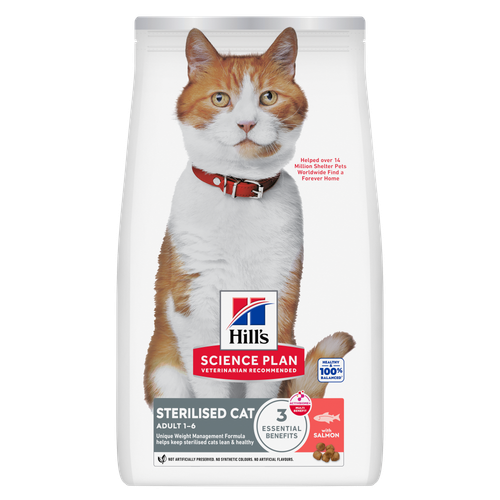
Hill's Science Plan Adult Sterilised Cat Dry Food with Salmon is specially formulated with ActivBiome+ Multi-Benefit Technology. It is a precisely balanced nutrition, tailored to meet the needs of sterilised cats, to help keep them lean & healthy.

Hill's Science Plan Sensitive Stomach & Skin Adult Wet Cat Food with Turkey is a complete pet food for adult cats, aged 1–6 years. This highly digestible wet food comes in a pouch and supports healthy digestion, as well as nourishes skin and promotes a thick and lustrous coat.
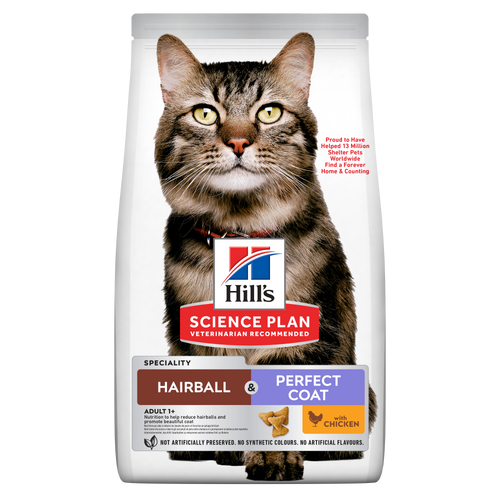
Hill's Science Plan Hairball & Perfect Coat Adult Cat Food with Chicken is formulated to effectively help avoid hairball formation in adult cats while promoting a beautiful coat. Thanks to its mix of essential omega-6 fatty acids, this food benefits the cat's skin and fur, keeping them healthy and shiny. Our Advanced Fibre Technology helps reduce hairballs by naturally promoting their passage through the gut. This food is formulated with high-quality protein for a perfectly balanced, great-tasting recipe.

Hill's Science Plan Perfect Digestion Cat Food with Chicken & Brown Rice nourishes your cat's unique microbiome and helps them reach their full potential.
Related articles
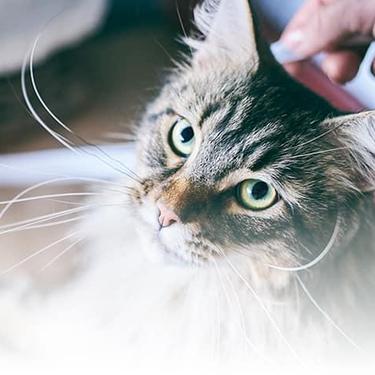
Learn how to make homemade cat treats that are healthy for your pet with this recipe from Hills Pet Nutrition.

There are three common ways to feed a cat. Each way has its advantages and disadvantages.
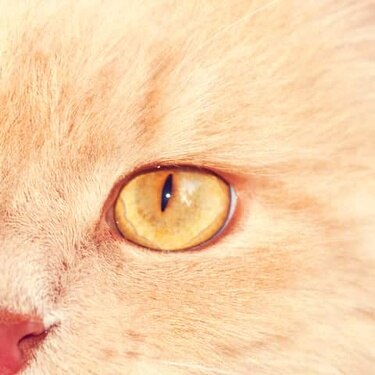
Chocolate is known to be poisonous for dogs, but it can also be toxic for cats. Learn why chocolate is bad for cats & what to do if she's eaten it.
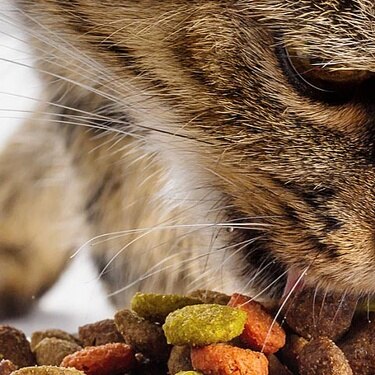
From essential vitamins & minerals to different types of meat, learn what to look for when choosing the best cat food for your feline.

Put your cat on a diet without them knowing
Our low calorie formula helps you control your cat's weight. It's packed with high-quality protein for building lean muscles, and made with purposeful ingredients for a flavourful, nutritious meal. Clinically proven antioxidants, Vitamin C+E, help promote a healthy immune system.
Put your cat on a diet without them knowing
Our low calorie formula helps you control your cat's weight. It's packed with high-quality protein for building lean muscles, and made with purposeful ingredients for a flavourful, nutritious meal. Clinically proven antioxidants, Vitamin C+E, help promote a healthy immune system.

